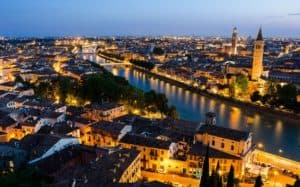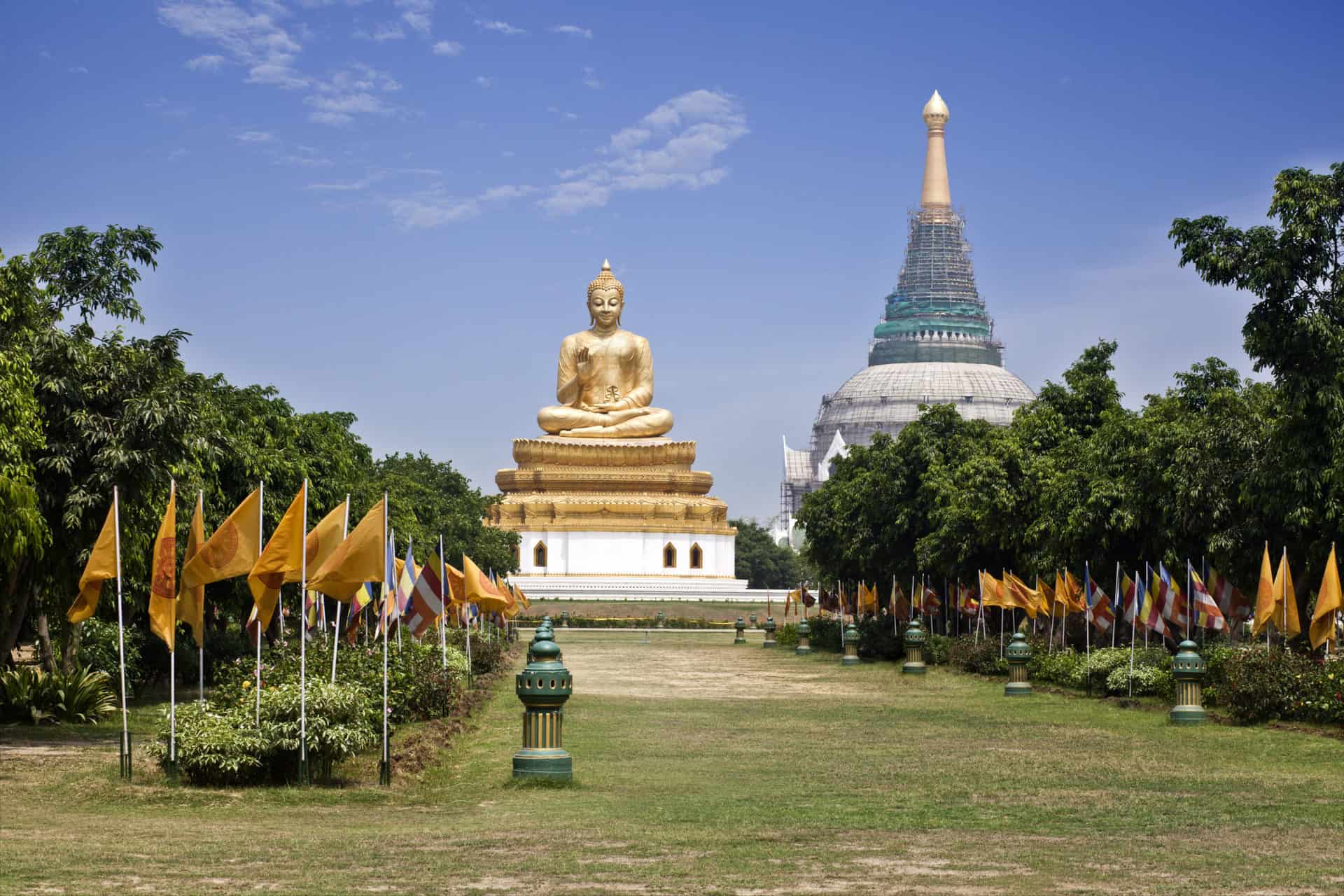The Psychology of Pilgrimages: Understanding Contemporary Motives and Routes

Updated On: March 27, 2024 by Eman Sameh
Pilgrimage, as a journey with deep spiritual or personal significance, is a concept as ancient as human civilisation itself. In times past, these reverent journeys often held religious connotations, marking paths toward sacred places that promised profound experiences. Today, however, the psychology of pilgrimages has transcended religious boundaries to embrace a variety of motivations. Our contemporary society has witnessed a resurgence in these meaningful journeys, not just as a pursuit of religious fulfilment but as a quest for personal growth, community connection, and a simpler, more grounded way of life.

The motivations for embarking on a pilgrimage are as diverse as the pilgrims themselves. While historical pilgrimages were primarily driven by faith and penitence, modern pilgrims might seek personal transformation, a sense of community with fellow travellers, or an opportunity to experience the tranquillity of walking in nature. Instances such as the Camino de Santiago attract those with spiritual inclinations and individuals looking for a break from the complexities of modern life. This eclectic mix of motivations underscores pilgrimages as complex psycho-existential phenomena, reflecting the multifaceted tapestry of human experience.
The Psychology of Pilgrimages

Pilgrimages have been a foundational aspect of various cultures and religions around the world. They serve as a bridge between the physical and spiritual and act as a nexus for communal and individual transformation throughout history.
The Evolution of Pilgrimage Practices
Pilgrimage, as a practice, has developed over millennia. Its origins can be traced to ancient times when individuals embarked on journeys to sacred places for religious, spiritual, or cultural reasons. These quests were often viewed as a means to gain divine favour or as an act of penance. Over the course of history, such journeys have been adopted and adapted by different faiths and cultures, integrating local traditions and social practices to create a rich tapestry of pilgrimage expressions.
Iconic Paths Throughout History
One of the most renowned pilgrimage routes is the Camino de Santiago, also known as the Way of St. James. This network of paths leads to the shrine of the apostle Saint James the Great in the cathedral of Santiago de Compostela in Galicia, northwestern Spain. Historically, it has served as a pivotal route for the exchange of ideas and culture, drawing pilgrims from all across Europe. This pilgrimage path’s cultural significance is that it has been designated as a UNESCO World Heritage Site, exemplifying its enduring legacy in the history of pilgrimage.
Motivations Behind Modern Pilgrimages

Modern pilgrimages are complex phenomena motivated by various factors, from deep religious commitment to a more secular quest for personal growth and adventure.
Religious and Spiritual Aspects
Religious motivation remains a fundamental factor driving many people to embark on pilgrimages. Participants engage in these journeys due to a sense of religious duty, a desire for spiritual renewal, or as a means of expressing their faith. Pilgrimages provide a tangible way to connect with the divine, allowing pilgrims to reinforce their religious identity within a community of like-minded individuals. Modern pilgrimages are gaining popularity in Western culture despite secular trends, indicating a continued search for spiritual fulfilment.
Cultural and Adventure Seeking
Many modern pilgrims seek cultural enrichment and adventure, motivated by the desire to experience new and diverse settings. They are driven by curiosity about historical and cultural landmarks, and the physical challenge of the journey itself. For these individuals, the pilgrimage is an opportunity for adventure, immersion in different cultures, and the chance to meet people from various walks of life.
Personal Transformation and Self-Discovery
Pilgrimages often cater to the human quest for self-actualisation and transformation. They serve as a means to achieve personal growth or as a break from the daily routine, offering reflection and space for introspection. Pilgrims seek moments of personal transformation and self-discovery, hoping to return from their journey with a new perspective on life. The experience enables individuals to reassess their lives and identities and find a deeper sense of purpose through spiritual seeking.
Profiles of Contemporary Pilgrims

In exploring the psychology of pilgrimages, we focus on who today’s pilgrims are and what propels them on their journeys. Our examination sheds light on diverse profiles, ranging from the faithful on spiritual quests to secular seekers of personal growth.
Age and Gender Demographics
Contemporary pilgrims represent a wide age range, reflecting a tapestry of life stages seeking meaning on these sacred routes. While historically, pilgrim demographics might have skewed towards older participants, recent trends indicate a shift. Young people, not uncommonly in their twenties and thirties, increasingly embark on pilgrimages as they search for direction or at existential junctures in their lives. Meanwhile, the aging population continues to make their presence known, viewing pilgrimages as an opportunity to reflect on life achievements and embrace spiritual or communal connection in later years.
Gender balance among pilgrims varies significantly, but there is an intriguing trend of slightly more female participants in modern times. The motivations of women often intersect along the lines of spiritual, cultural, and personal development goals.
Variety in Religious and Non-Religious Participants
The motivations propelling individuals to undertake pilgrimages have expanded beyond purely religious intentions. While many participants hold religious goals, a growing number are motivated by secular or existential searches. This diversity encompasses all manner of belief systems, from deeply religious individuals to atheists and agnostics partaking in the experience.
An intriguing finding is that nearly 11% of pilgrims identify their motivation as non-religious, while others layer their religious intention with additional motives. Such nuances point to a broadened perception of pilgrimage, not solely as an act of faith but also as a form of personal and emotional enrichment.
In the fabric of modern-day pilgrimages, we observe an increasing blend of the sacred and the secular. Pilgrims and participants alike are drawn from a spectrum of backgrounds, and their myriad motivations vary from seeking spiritual peace to fulfilling a challenging physical endeavour or even navigating through a phase of personal growth. This variety reflects a more inclusive approach to contemporary pilgrimages, one that honours both tradition and individualistic expression.
The Social Dimension of Pilgrimages

Pilgrimages have always had a profound social aspect, from the forging of community along the way to the rituals that underpin the shared journey. We explore how these elements create a bond among pilgrims.
Community Building Along the Route
As we embark on pilgrimages, we become part of a loving community, with relationships and a sense of communitas—a spirit of equal companionship—developing naturally amongst us. The pilgrimage experience is not merely an individual’s path; it is also a communal endeavour where conversing, sharing resources, and mutual encouragement occur and flourish.
Rituals and Group Dynamics
Rituals play a key role in defining group dynamics during pilgrimages. They reinforce a shared identity and establish a rhythm to our journey. Whether it’s participating in collective prayers or enduring challenging stretches of the route together, these acts contribute to a strong sense of community and enhance our collective experience.
The Camino de Santiago Experience

The Camino de Santiago represents a tapestry of cultural and geographical splendour intertwined with the modern search for personal meaning.
Geographical and Cultural Richness
The Camino de Santiago, known as the Way of Saint James, is a network of routes spanning northern Spain, culminating at the apostle Saint James the Great shrine in the Cathedral of Santiago de Compostela. Our journey across this storied landscape immerses us in the rich tapestry of Spanish culture and presents an array of breathtaking geography. From the rugged coasts of Galicia to the rolling vineyards of La Rioja, the path traverses a diversity of terrains, each with its own distinct aura and history.
Landscapes Travelled
- Galicia’s Rugged Coasts: Challenging yet rewarding, these rocky shores boast undisturbed beauty.
- La Rioja’s Vineyards: Culturally sumptuous, these regions offer serene vistas and a taste of local viticulture.
Each step along the Camino is a testament to the region’s historical legacy, showcasing architectural marvels like Romanesque churches and medieval bridges that have withstood the test of time. The melding of geography with cultural artefacts creates an experience that is as educational as it is mystical.
Modern Appropriation of Ancient Ritual
Our contemporary engagement with the Camino is a vibrant reimagining of an age-old tradition dating back to medieval times. Historically, it has been a religious quest, but today’s pilgrims might embark on the Camino for various secular motivations, seeking anything from self-discovery to physical challenge or even social connectivity. Recent analyses reveal a diversification in the motivations of modern pilgrims, where spiritual inclinations and a thirst for new experiences often converge.
Embracing the ancient ritual of pilgrimage, we now weave personal narratives into the fabric of this historic journey, creating individual tales of transformation and growth. Such a journey has the potential to be a rite of passage, an opportunity for reflection, or a pause from the rapid pace of everyday life. This modern fusion of past and present embodies the essence of the Camino de Santiago experience and continues to draw us to this cherished route.
Psychological Impacts of Pilgrimages

When we explore pilgrimages, we recognise the profound psychological changes they can induce. The impacts are multifaceted, ranging from enhanced well-being to the profound handling of loss and the pursuit of wisdom.
Well-being and Mental Health Benefits
Pilgrimage is a journey that often leads to a significant increase in personal well-being. Existing studies highlight how walking in natural environments, a common aspect of many pilgrimages, can alleviate symptoms of depression and anxiety. The act of embarking on a pilgrimage provides a combination of physical activity, connection to nature, and time for reflection, all of which positively influence mental health. Experiences such as the Camino de Santiago encapsulate the essence of modern pilgrimage and clarify that well-being is not just a physical state but a holistic one, encompassing emotional and spiritual health.
Coping with Loss and Gaining Wisdom
Pilgrimages offer a unique backdrop for individuals to process experiences of loss and find meaning in their lives. Through the rhythm of walking and the physical challenge, pilgrims often report a transformation in their understanding of life’s events, including coping with bereavement and other forms of personal loss. The journey symbolises progress, not just towards a physical destination but also towards inner wisdom and acceptance. As we engage with various cultures and histories, our insights deepen, helping us approach our individual and collective losses with a newfound perspective, one that is reflected in resources like Counseling.org, which delves into the transformative nature of such pilgrimages.
Pilgrimage as a Modern Tourist Phenomenon
The intersection of pilgrimage and tourism has created a unique dimension within the travel industry, blending spiritual motives with modern touristic experiences. This trend has led to a growing need for effective management and understanding of the economic impact on destinations.
Pilgrimage Tourism Management
Pilgrimage sites have become significant tourist attractions, offering experiences that combine religious significance with the desire for personal enrichment. These destinations require tailored management practices to cater to the needs of pilgrims who are tourists by nature. The dual identity of these travellers necessitates specialised hospitality services that honour the sacred nature of their journey while providing for their touristic needs. Agencies and local authorities often collaborate to ensure the sustainability and preservation of these pilgrimage sites, balancing visitor access with conservation efforts. Such management involves careful planning of itineraries, amenities, and interpretive services that enhance the visitor experience without detracting from the spiritual essence.
Economic Implications for Destinations
When managed effectively, pilgrimage tourism can significantly boost the destination’s local economy. Revenue generated from lodging, dining, and the sale of memorabilia can provide a stable source of income and create jobs within the community. However, this influx of tourists also necessitates investment in infrastructure and services to accommodate increased foot traffic and minimise any negative impacts. Funding for these upgrades often comes from a combination of government initiatives, donations, and business ventures, all aimed at ensuring a positive experience for tourists and economic benefits for the localities.
Environmental Aspects of Pilgrimages

In the realm of pilgrimages, the environmental dimension is often a profound aspect of the journey. The natural setting influences both the spiritual and physical experience of pilgrims, extending beyond mere backdrop to a significant component of the pilgrimage itself.
Interactions with Nature and Landscape
Engaging with the Physical Environment: Pilgrimages naturally lead us through diverse landscapes. As we traverse these areas, the challenge becomes a fundamental part of the introspective journey. Closeness to Nature enhances this reflection, with pilgrims often reporting a deepened sense of connection to the world around them.
Emerging Themes in Modern Pilgrimages: Studies have identified a range of impressions pilgrims associate with their journey, such as the authentic experience and walking in nature. These elements are pivotal, pointing towards an integrated psycho-existential phenomenon where the environment plays a crucial role.
Sustainable Practices and Ecotourism
The Role of Sustainability: As custodians of the landscapes we explore, it’s our responsibility to ensure our travels are environmentally conscious. This is where the principles of Sustainable Practices and Ecotourism come into play, encouraging us to leave minimal footprints while still engaging deeply with the regions we visit.
Contributions to Conservation: Pilgrimage routes are increasingly adopting eco-friendly measures. Our practices, from waste management to supporting local economies, aid in preserving these sacred spaces. By valuing Sustainable Practices, such as staying at eco-friendly lodgings or partaking in conservation activities, we contribute substantially to the ecological well-being of these cherished environments.
The Pilgrimage in Popular Culture

Pilgrimages, steeped in millennia of human culture, are increasingly represented in contemporary media and arts, echoing the depth of our spiritual quests and cultural adventures.
Representation in Media and Literature
In our explorations of culture and spirituality, we recognise that pilgrimages are not just traditional religious journeys but also modern cultural phenomena. These sacred travels manifest in various forms within media and literature, often illuminating the spiritual significance and personal transformations associated with such quests. Take, for instance, the phenomenon of the War Grave Pilgrimage, which extends beyond religious connotations to encompass a modern cultural context. The representation of these pilgrimages in contemporary narratives allows a diverse audience to connect with the concept of a meaningful journey.
The Influence on Art and Expression
Pilgrimages have always been a profound source of inspiration for artists, lending a rich tapestry of motifs and themes that transcend time. Our collective imagination is captured by the myriad ways spiritual travels have influenced art, from music celebrating sacred paths such as the Pilgrimage to Graceland to visual arts embodying the essence of pilgrimage through evocative symbolism. The impact is evident as artists continue to draw from the well of pilgrimage, moulding cultural expressions that resonate with the truths and experiences of seekers from all walks of life.
Assessment and Future of Pilgrimages

This section will examine the scientific methods used to study pilgrimages and project future trends and developments within this spiritual phenomenon.
Study Methodologies in Pilgrimage Research
We recognise that a thorough understanding of pilgrimages necessitates robust research methodologies. Historically, studies have utilised qualitative interviews to glean insight into pilgrims’ motivations and satisfaction levels. Emerging themes, such as the search for authenticity and transformation, have been identified through these methodologies. Quantitative surveys also play a crucial role by establishing correlations between the pilgrims’ goals and their feelings of disconnect or fulfilment at sacred places. We must continue refining these methods to ensure the reliability and validity of our findings on the psychology behind pilgrimages.
Anticipating Trends and Changes
Our role also includes anticipating how contemporary pilgrimages will evolve. The inclination towards spiritual but not religious journeys indicates a more inclusive future where various expressions of spirituality and secular motivations coexist. We project a sustained interest in pilgrimages as avenues for self-reflection and disconnect from the digital world. This trend suggests that as society advances, the importance placed on reconnecting with oneself and the past at revered sites is likely to grow, reshaping the nature of pilgrimages towards a more varied audience seeking a multitude of forms of satisfaction.
Frequently Asked Questions

In this section, we explore common enquiries about modern motivations for and impacts of pilgrimages and address the spiritual contexts that influence these journeys. We aim to provide clarity and insight into what attracts individuals to these transformative experiences.
What purposes do pilgrimages serve in the contemporary global context?
Pilgrimages today often transcend religious duties, serving as opportunities for personal reflection, cultural engagement, and the pursuit of a sense of community among like-minded individuals. They cater to a range of purposes, from self-discovery to a deep desire for authentic experiences in a rapidly globalising world.
Which motivations drive individuals to undertake pilgrimages in the present day?
Many motivations prompt modern pilgrims to set out on their journeys, with spiritual and secular reasons often intermingling. While some seek a connection to the divine, others look for self-improvement, adventure, or an escape from the regularity of daily life.
Can you list some of the most frequented pilgrimage destinations around the world?
Destinations like the Camino de Santiago in Spain, the Islamic holy city of Mecca, and India’s Ganges River are among the world’s most visited pilgrimages. These sites attract millions who seek spiritual fulfilment, cultural immersion, or the fulfilment of religious obligations.
How do spiritual beliefs influence the decision to embark on a pilgrimage?
Spiritual beliefs profoundly shape motivations for embarking on pilgrimages, often reflecting a seeker’s quest for meaning or the desire for spiritual restoration. These journeys represent more than physical travel; they mark a passage toward inner transformation aligned with one’s faith or spirituality.
In what ways have the motives for pilgrimage evolved over recent years?
Pilgrimage motives have broadened, with more individuals seeking transformation outside of purely religious intentions. The modern pilgrim may be driven by a desire for wellness, cultural exploration, or personal challenges, indicating an evolution to more individualistic and diverse motivators.
What are the psychological impacts of participating in pilgrimages on modern travellers?
The psychological impacts on modern travellers are significant, often resulting in a sense of self-transformation and personal growth. Pilgrimages can instil a heightened sense of self-awareness, community connection, and a broadened perspective on life’s complexities.






